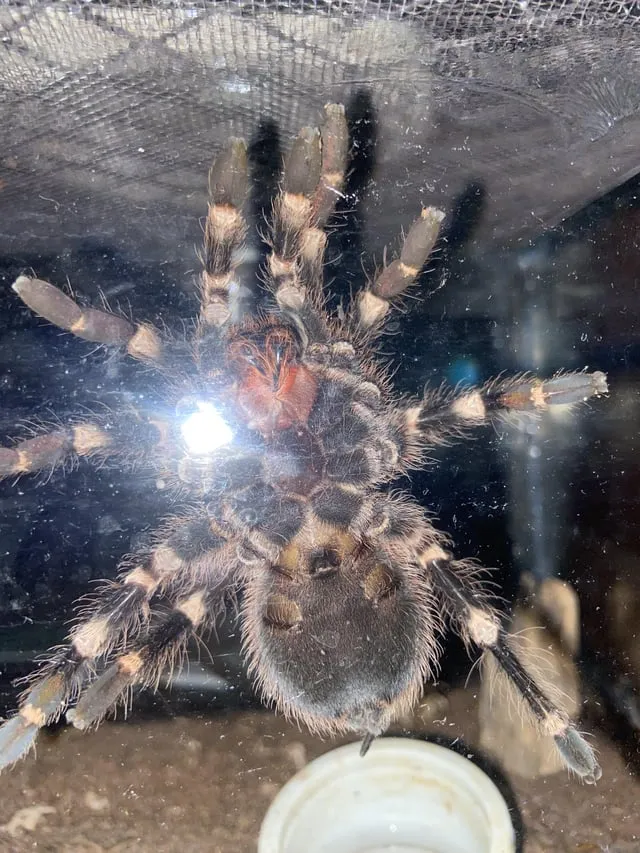What is a Geniculata Tarantula?
The Geniculata Tarantula, scientifically known as Acanthoscurria geniculata, is a captivating and popular species among tarantula enthusiasts. Often called the Brazilian white knee tarantula due to its striking markings, this spider originates from the tropical rainforests of Brazil. Known for its relatively docile temperament compared to other tarantula species, the Geniculata is a rewarding pet for both novice and experienced keepers. These spiders are relatively large and impressive, with females typically living longer than males. Their care requirements are manageable, making them a great choice for anyone looking to delve into the world of arachnids.
Appearance and Characteristics
Size and Lifespan
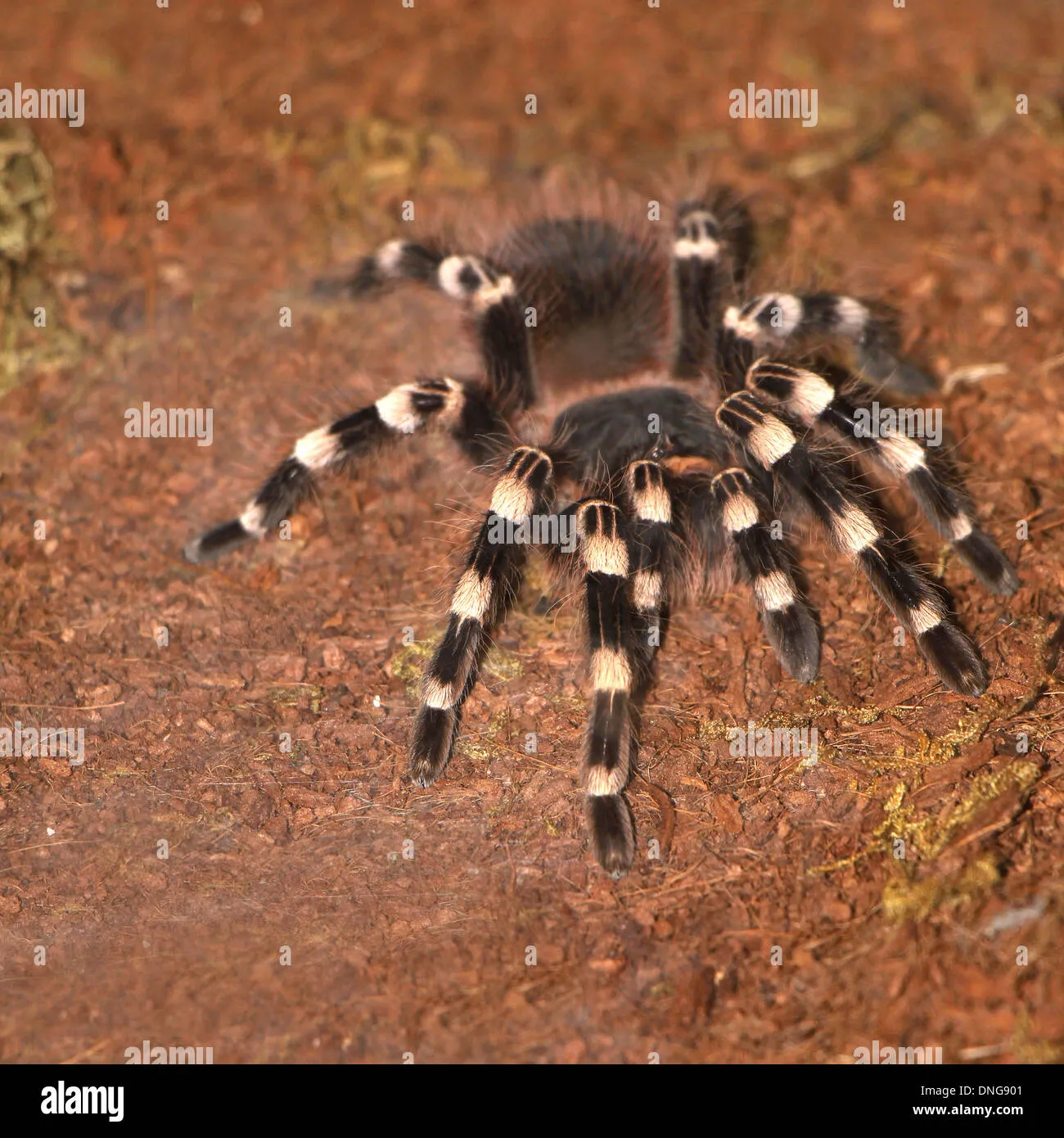
Geniculata tarantulas are sizable spiders, with females reaching a leg span of up to 8 inches (20 cm) or more. Males are generally smaller. In terms of lifespan, females can live for 10 to 15 years, while males typically live for 3 to 5 years. This considerable lifespan is one of the appealing factors for many keepers, providing a long-term companion that can be observed and enjoyed for years to come.
Distinctive Markings
The defining feature of the Geniculata Tarantula is its striking coloration. The body is typically a deep black, complemented by vibrant white stripes on the leg joints, giving it the name ‘white knee’. The abdomen is covered in reddish-brown hairs, adding a touch of contrast to its overall appearance. The combination of these colors makes the Geniculata one of the most visually appealing tarantula species.
Habitat and Natural Environment
Native Region
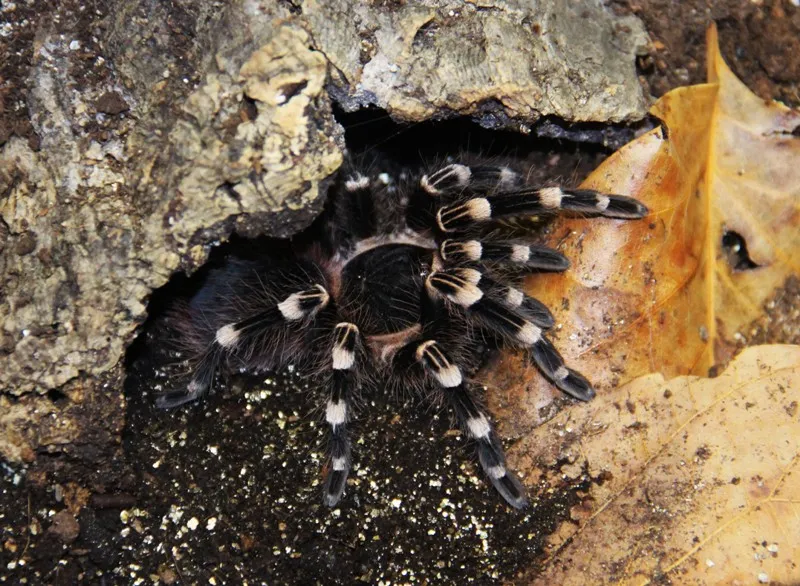
In the wild, the Geniculata Tarantula is native to the tropical rainforests of Brazil. These spiders are terrestrial, meaning they live on the ground and are often found in burrows or under fallen logs, rocks, or leaf litter. They thrive in warm, humid environments, which is crucial to replicate in captivity to ensure their health and well-being.
Ideal Living Conditions
To provide a suitable habitat, a Geniculata Tarantula requires a terrarium that is at least three times its leg span in length. The enclosure should be well-ventilated, with a substrate of about 4-6 inches of a mix of peat moss, vermiculite, and coconut fiber to maintain humidity. Provide a water dish and a hide, such as a piece of cork bark or a hollow log, for the tarantula to retreat to. The temperature should be maintained between 75-85°F (24-29°C), with humidity levels around 70-80%.
Diet and Feeding Habits
Preferred Prey
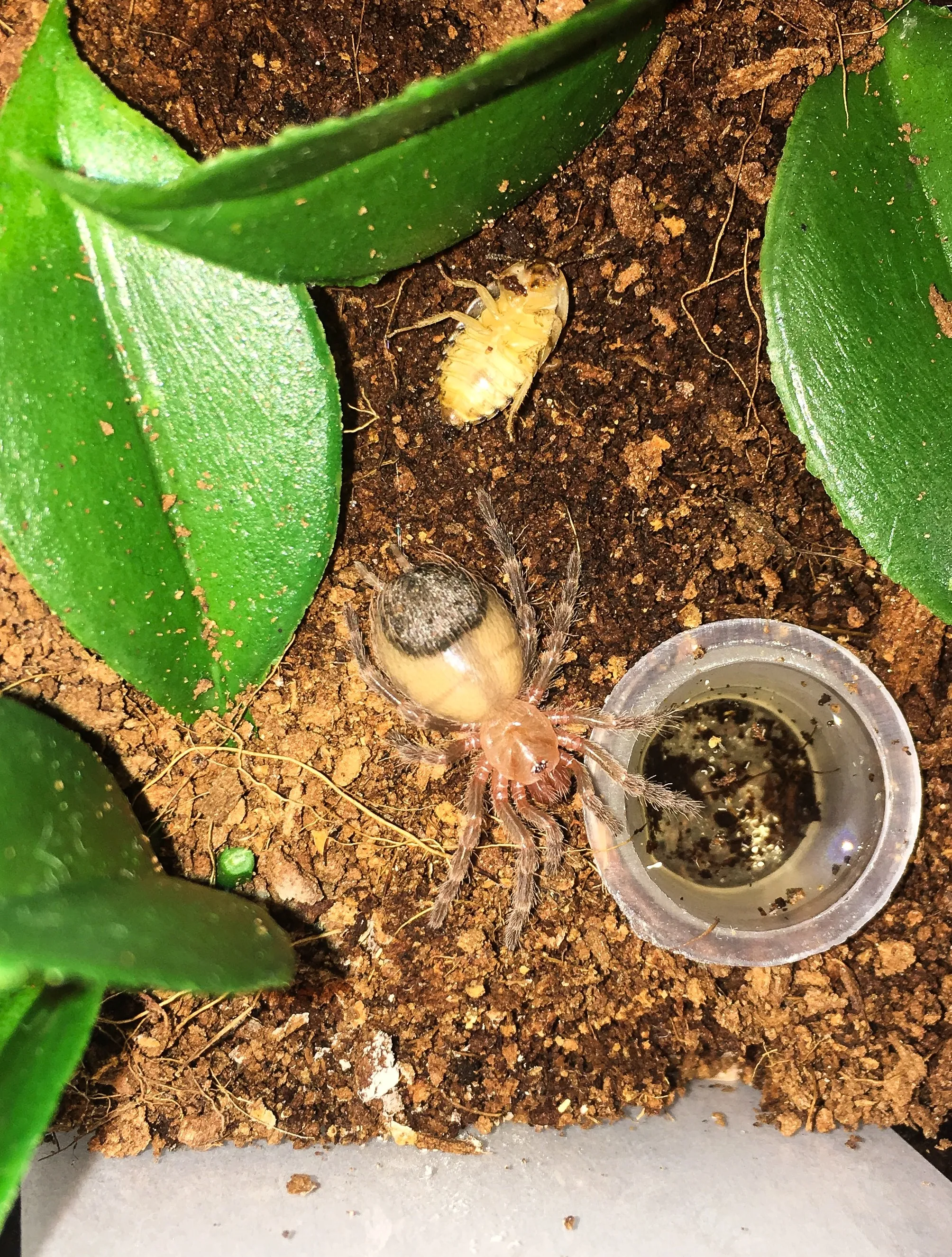
The Geniculata Tarantula is a voracious eater. In the wild, it feeds on insects, small invertebrates, and sometimes even small vertebrates. In captivity, a diet of crickets, cockroaches, mealworms, and other commercially available feeder insects is sufficient. It is important to ensure that the prey is gut-loaded with nutritious food before being fed to the tarantula.
Feeding Frequency
The frequency of feeding depends on the spider’s age and size. Spiderlings should be fed 2-3 times a week, while juveniles can be fed every 4-7 days. Adult Geniculata tarantulas typically only need to be fed once every 7-10 days. It is crucial to remove any uneaten prey to prevent stress on the tarantula and to maintain hygiene in the enclosure. Always provide a fresh water source.
Temperament and Behavior
Handling and Interaction
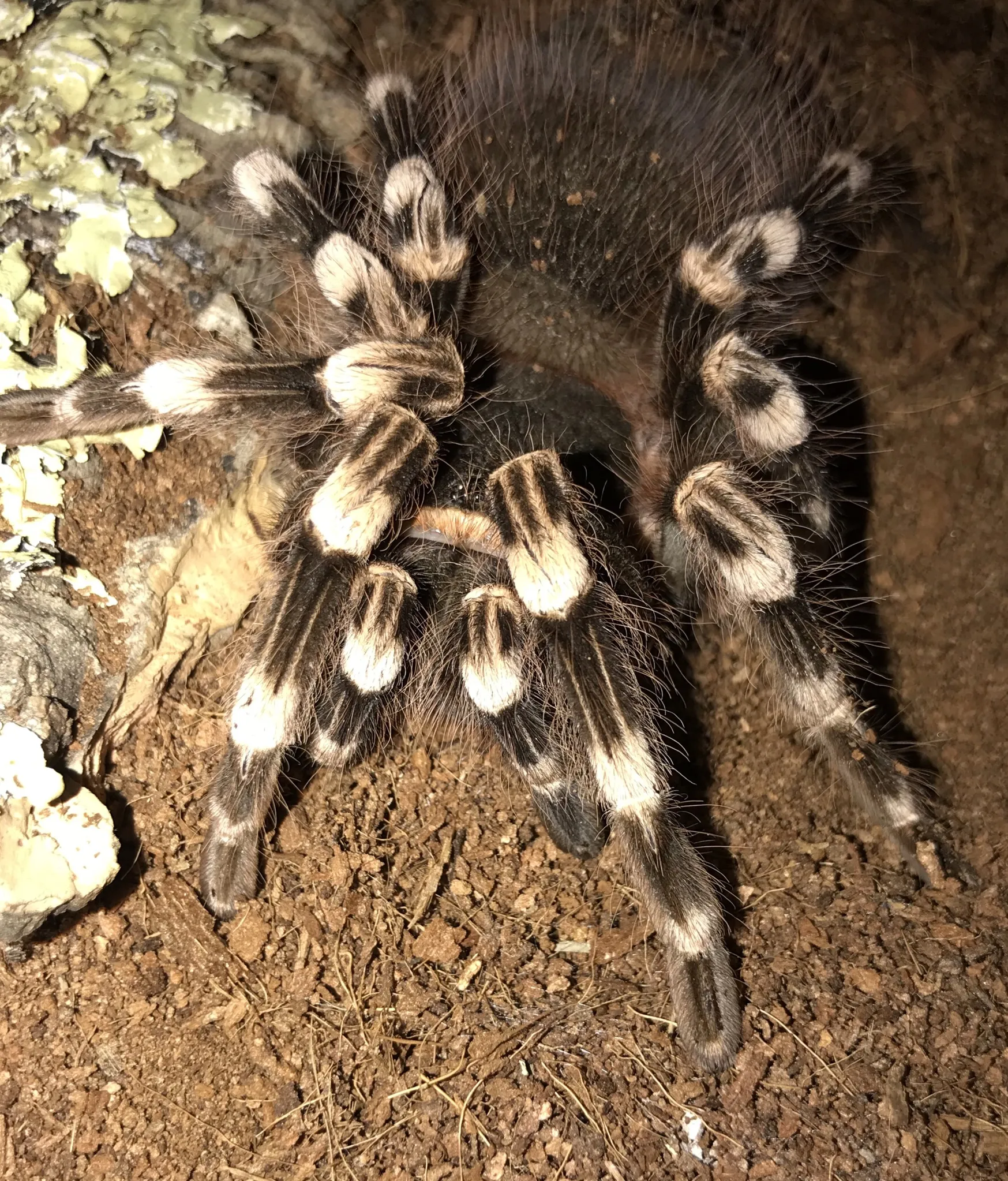
Geniculata tarantulas are generally considered to be docile and are less prone to biting than some other species. However, it is still important to exercise caution when handling them. Avoid handling unless necessary, and always do so over a soft surface in case the spider falls. Always wash your hands before and after handling to prevent transferring any harmful substances.
Defensive Mechanisms
While generally docile, Geniculata tarantulas will defend themselves if they feel threatened. They may flick urticating hairs from their abdomen, which can cause skin irritation and discomfort if they come into contact with human skin. They may also bite, although this is rare. Maintaining a safe distance and respecting the spider’s space is the best approach to avoid any defensive behavior.
Breeding and Reproduction
Mating Process

Breeding Geniculata tarantulas in captivity requires careful planning and preparation. The process begins with introducing a mature male to a mature female’s enclosure. The male will typically approach the female and drum on her web to signal his interest. If the female is receptive, she will allow the male to mate. Afterward, it is essential to remove the male to prevent him from being cannibalized by the female.
Egg Sac and Spiderlings
After mating, the female will create an egg sac, which can contain hundreds of eggs. She will guard the egg sac until the spiderlings hatch. The spiderlings, or slings, will go through several molts as they grow. It’s important to separate them into individual enclosures once they become cannibalistic or at least before the next molt. Providing the slings with appropriate-sized prey and maintaining proper humidity is critical for their healthy development.
Common Health Issues and Care
Preventative Measures
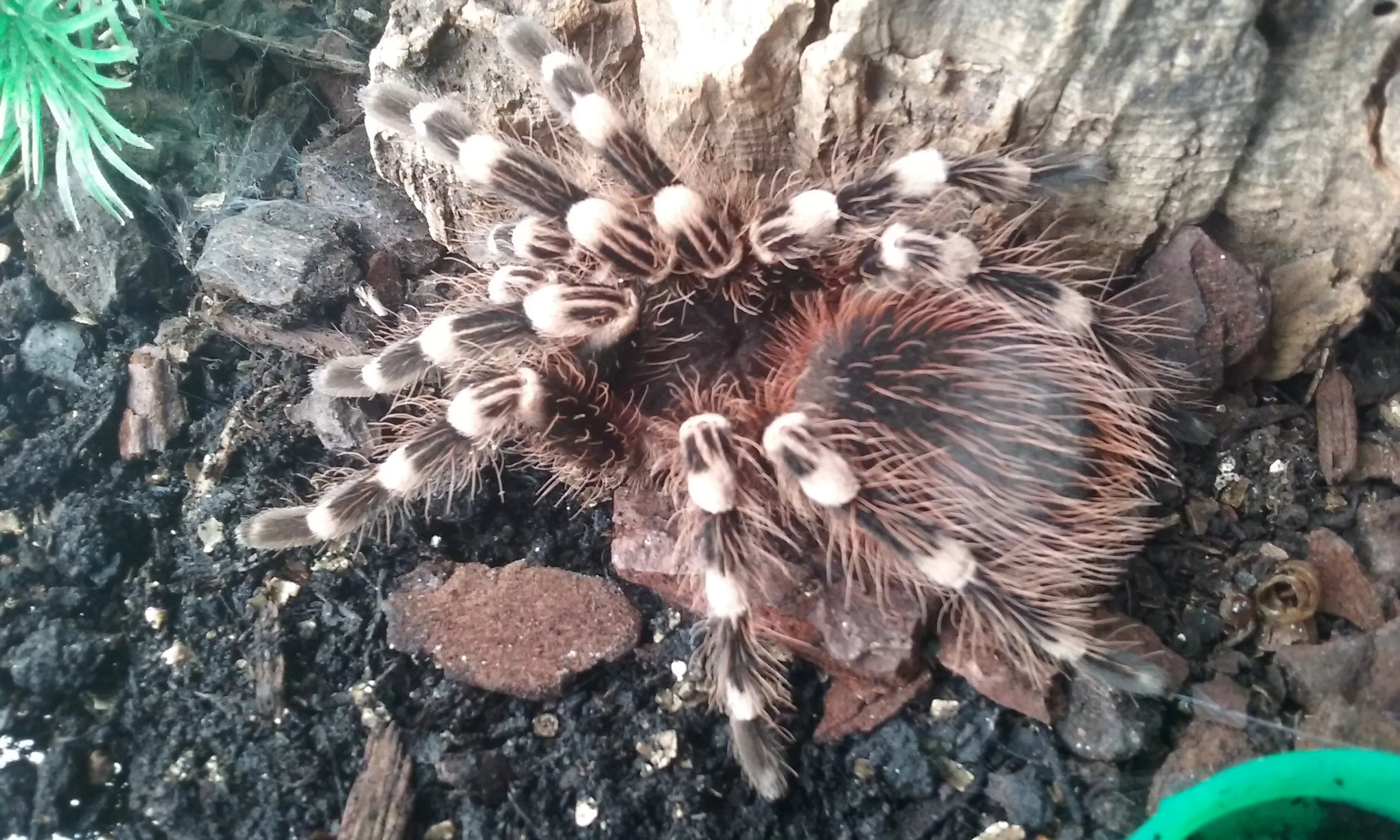
Preventing health issues is paramount for any Geniculata tarantula keeper. This involves maintaining a clean enclosure, providing a balanced diet, and ensuring proper temperature and humidity levels. Regular cleaning of the enclosure and removal of uneaten food will help prevent mold, mites, and other potential problems. Providing fresh water at all times and monitoring the spider’s behavior is critical.
Signs of Illness
Keep an eye out for any signs of illness, such as lethargy, loss of appetite, unusual postures, or difficulty molting. If a tarantula is not eating, has a swollen abdomen, or exhibits erratic movements, it’s crucial to consult with an experienced tarantula keeper or a veterinarian familiar with arachnids. Quick intervention can sometimes prevent the condition from worsening. A properly maintained environment is key to avoid most of the health issues.
Conclusion
The Geniculata Tarantula is a fascinating and relatively easy-to-care-for species, making it an excellent choice for both beginners and experienced tarantula enthusiasts. By understanding its unique characteristics, habitat requirements, and care needs, you can provide a healthy and enriching environment for this beautiful arachnid. From its striking appearance to its generally docile temperament, the Geniculata is sure to captivate anyone interested in the world of exotic pets. Owning a Geniculata tarantula offers a rewarding experience, providing a glimpse into the intriguing world of spiders and the beauty of nature.
